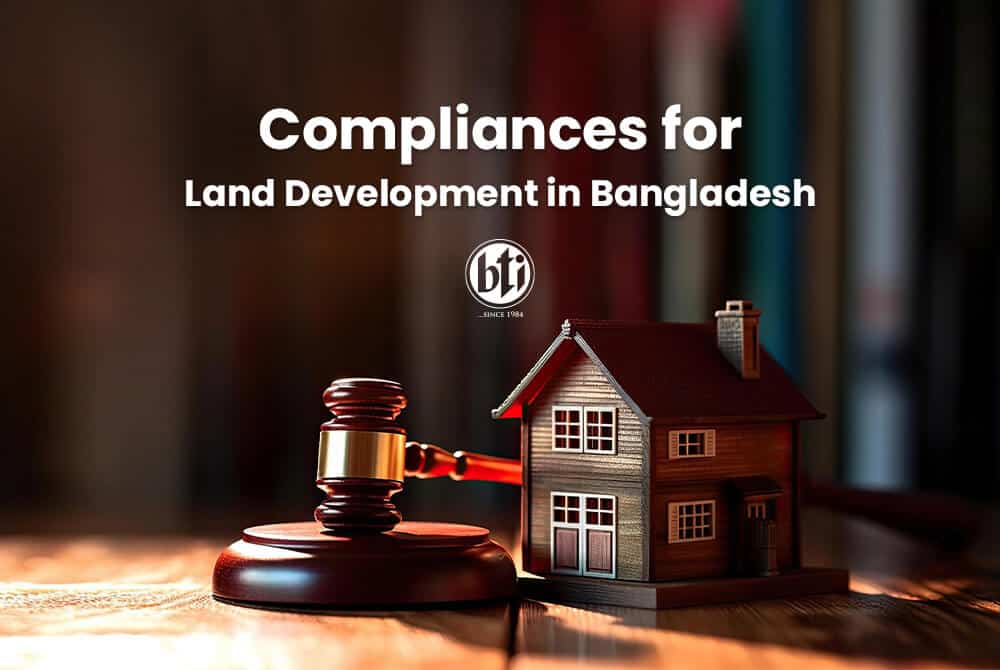
Real estate development is a complex and challenging process that involves various aspects such as land acquisition, design, construction, and management. In order to ensure the quality, safety, and sustainability of the built environment, real estate developers in Bangladesh have to comply with various government rules and regulations. This article will give you a neat idea of the major compliances that real estate developers have to follow in Bangladesh.
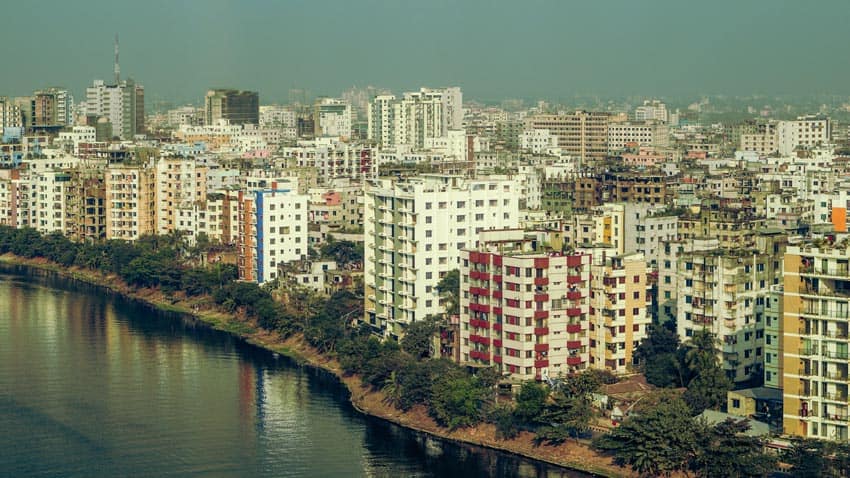
BNBC Rules and Regulations
BNBC (Bangladesh National Building Code), is a set of guidelines for proper construction practices in Bangladesh. The BNBC was first published in 1993 and revised in 2017, covering various topics such as structural design, fire safety, environmental laws, plumbing, electrical, and mechanical systems, accessibility, and disaster management. The BNBC is meant to be applied by professionals working with construction projects, such as architects, engineers, contractors, and inspectors. The BNBC aims to secure the health, safety, and well-being of the occupants and users of buildings by ensuring proper standards in the construction and design of buildings.
Real estate developers in Bangladesh have to follow the BNBC rules and regulations when they plan, design, construct, and maintain their projects. They have to obtain the necessary approvals and permits from the relevant authorities before starting any construction work. They also have to ensure that their projects comply with the BNBC requirements in terms of materials, methods, quality control, testing, inspection, and certification. Any violation of the BNBC rules and regulations may result in legal actions, penalties, or cancellation of the project.
Here are just some of the mandates set by BNBC that developers are required to follow:
- The BNBC requires that the structural design of buildings should be based on the principles of limit state design and should follow the relevant codes and standards.
- The BNBC specifies the minimum standards for fire safety of buildings, such as fire resistance rating, fire alarm system, fire extinguisher, fire exit, fire hydrant, sprinkler system, etc. The BNBC also classifies buildings into different fire zones based on their occupancy and location.
- The BNBC provides guidelines for energy efficiency and sustainability of buildings, such as thermal insulation, solar water heating, rainwater harvesting, waste management, green building rating system, etc.
- The BNBC mandates that all buildings should have adequate ventilation, lighting and sanitation facilities for the health and comfort of the occupants. The BNBC also prescribes the minimum dimensions of habitable and non-habitable rooms, kitchen, bathroom and toilet, stairway, etc.
Some of the topics that the revised BNBC 2017 covers are the roles and responsibilities of local authorities, updated maps of seismic zones and wind speeds, and the qualifications of professionals. It also introduces new chapters on topics such as energy efficiency and sustainability, rainwater management, maintenance, steel-concrete structures, bamboo structures, and universal accessibility.
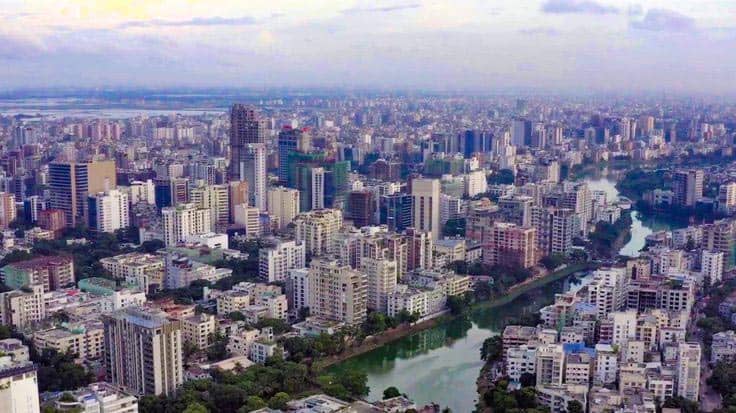
DAP Rules for Dhaka City
DAP (Detailed Area Plan) is a third and last tier of development plan for Dhaka city under the Dhaka Metropolitan Development Plan (DMDP). The DAP provides more detailed planning proposals for specific sub-areas compliant with the Structure Plan and the Urban Area Plan. The DAP was approved by the Prime Minister in 2020 with the aim to make Dhaka a liveable and modern mega city by 2035. The DAP covers various issues such as land use zoning, infrastructure development, spatial planning, civic amenities, utility services, and environmental management. The DAP is overseen by the Housing and Building Research Institute (HBRI) and implemented through community participation. Some of the main mandates of DAP are:
- To protect and conserve the natural resources and ecological balance of Dhaka city, such as water bodies, wetlands, flood-flow zones, green belts, etc.
- To regulate and control the growth and expansion of Dhaka city, such as population density, building height, floor area ratio (FAR), open space, parking space, etc.
- To improve and upgrade the existing infrastructure and utility services of Dhaka city, such as roads, bridges, flyovers, mass transit systems, water supply, sewerage, drainage, electricity, gas, telecommunication, etc.
- To provide and enhance the civic amenities and social facilities of Dhaka city, such as education, health, recreation, culture, heritage, religion, etc.
- To ensure the participation and involvement of all stakeholders in the planning and implementation of the DAP, such as government agencies, local authorities, professionals, civil society organizations, private sector entities, and community groups.
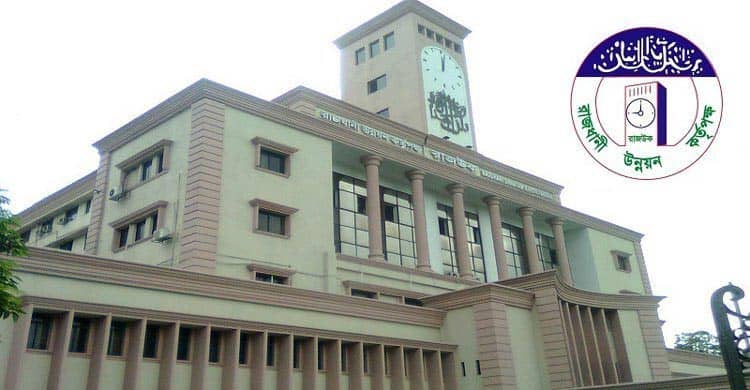
RAJUK Compliance
RAJUK stands for Rajdhani Unnayan Kartripakkha (Capital Development Authority), which is a statutory body under the Ministry of Housing and Public Works. RAJUK is responsible for planning and developing Dhaka city and its surrounding areas. It has the power to approve or reject any construction project within its jurisdiction area. RAJUK also has the authority to enforce the DAP rules and regulations.
Real estate developers in Dhaka city have to follow the DAP and RAJUK rules when they develop their projects. They have to submit their project proposals to RAJUK for approval along with the necessary documents and fees. They also have to ensure that their projects conform to the DAP guidelines in terms of land use, floor area ratio (FAR), building height, setback, parking space, open space, greenery, drainage system, service centers, etc. Any deviation from the DAP or RAJUK rules may result in rejection of the project or imposition of fines or penalties.
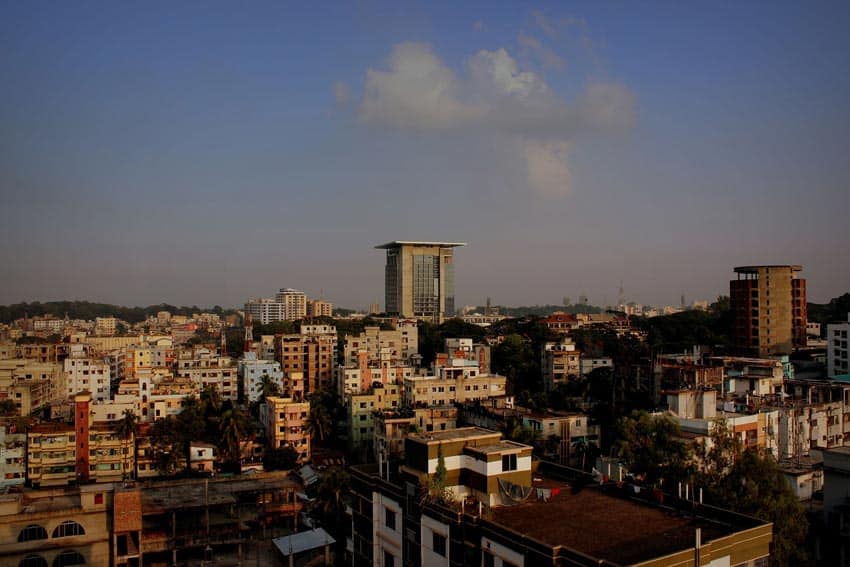
CDA Rules for Chittagong
CDA stands for Chittagong Development Authority, which is a statutory body under the Ministry of Housing and Public Works. CDA is responsible for planning and developing Chittagong city and its surrounding areas. Like RAJUK, it has the power to approve or reject any construction project within its jurisdiction area. CDA also has the authority to enforce its own rules and regulations.
Real estate developers in Chittagong city have to follow the CDA rules when they develop their projects. They have to submit their project proposals to CDA for approval along with the necessary documents and fees. They also have to ensure that their projects conform to the CDA guidelines in terms of land use, building height, setback, parking space, open space, greenery, drainage system, etc. Similar to RAJUK in Dhaka, violation of these rules can lead to hefty fines and rejection of the project.
Real estate development is a vital sector for the economic growth and urbanization of Bangladesh. However, it also poses various challenges and risks for the environment and society. Therefore, real estate developers in Bangladesh have to follow various government compliances to ensure that their projects are safe, sustainable, and beneficial for all stakeholders. By complying with these compliances, real estate developers can not only avoid legal troubles but also enhance their reputation and credibility in the market.